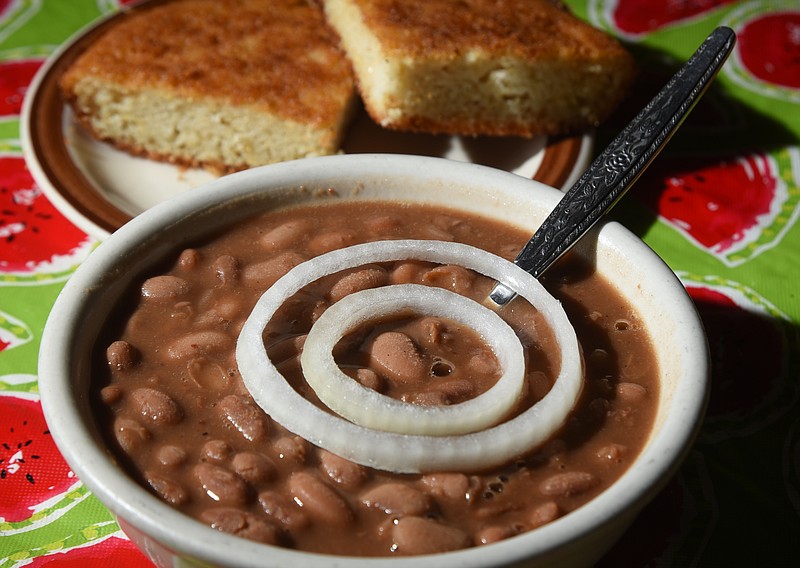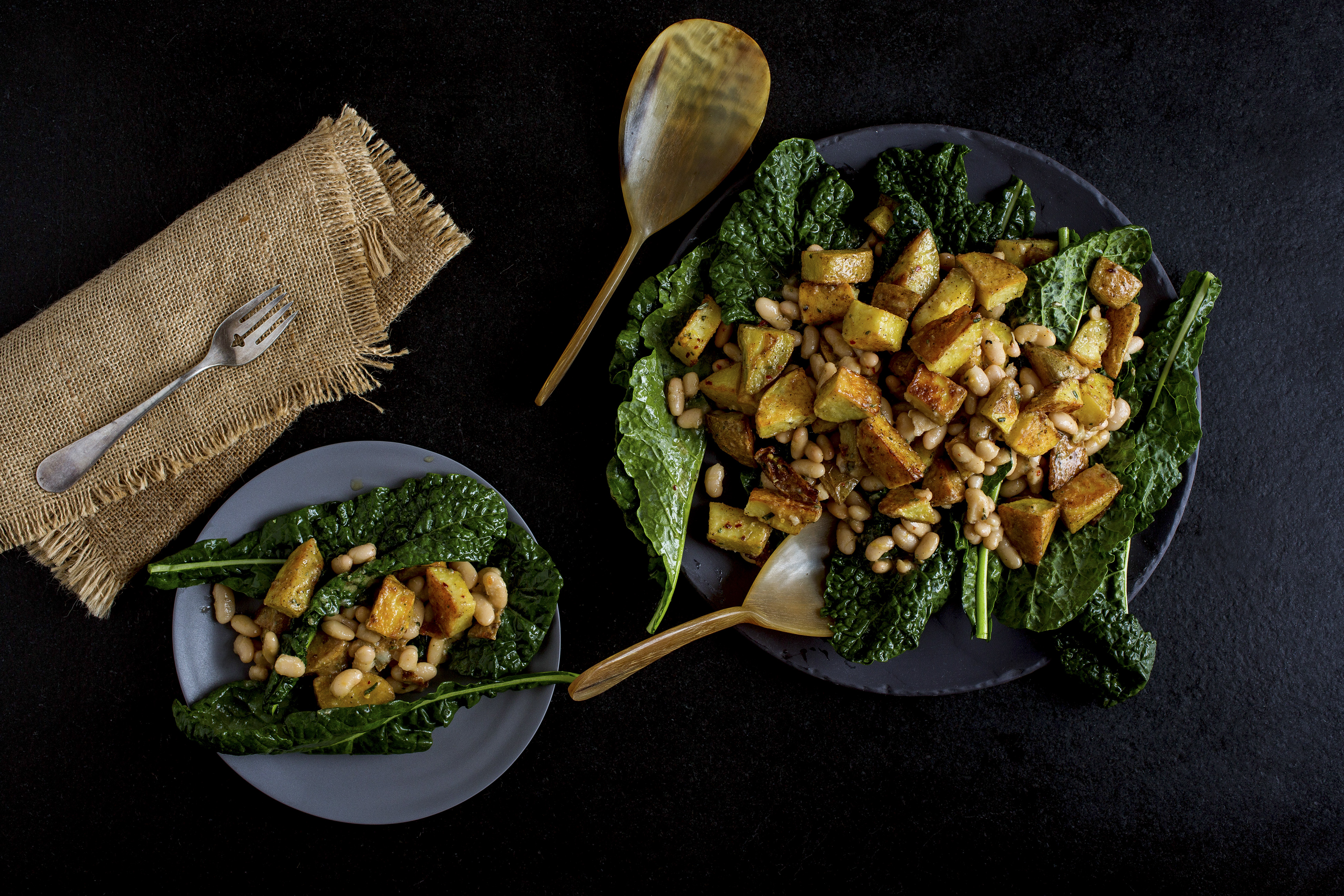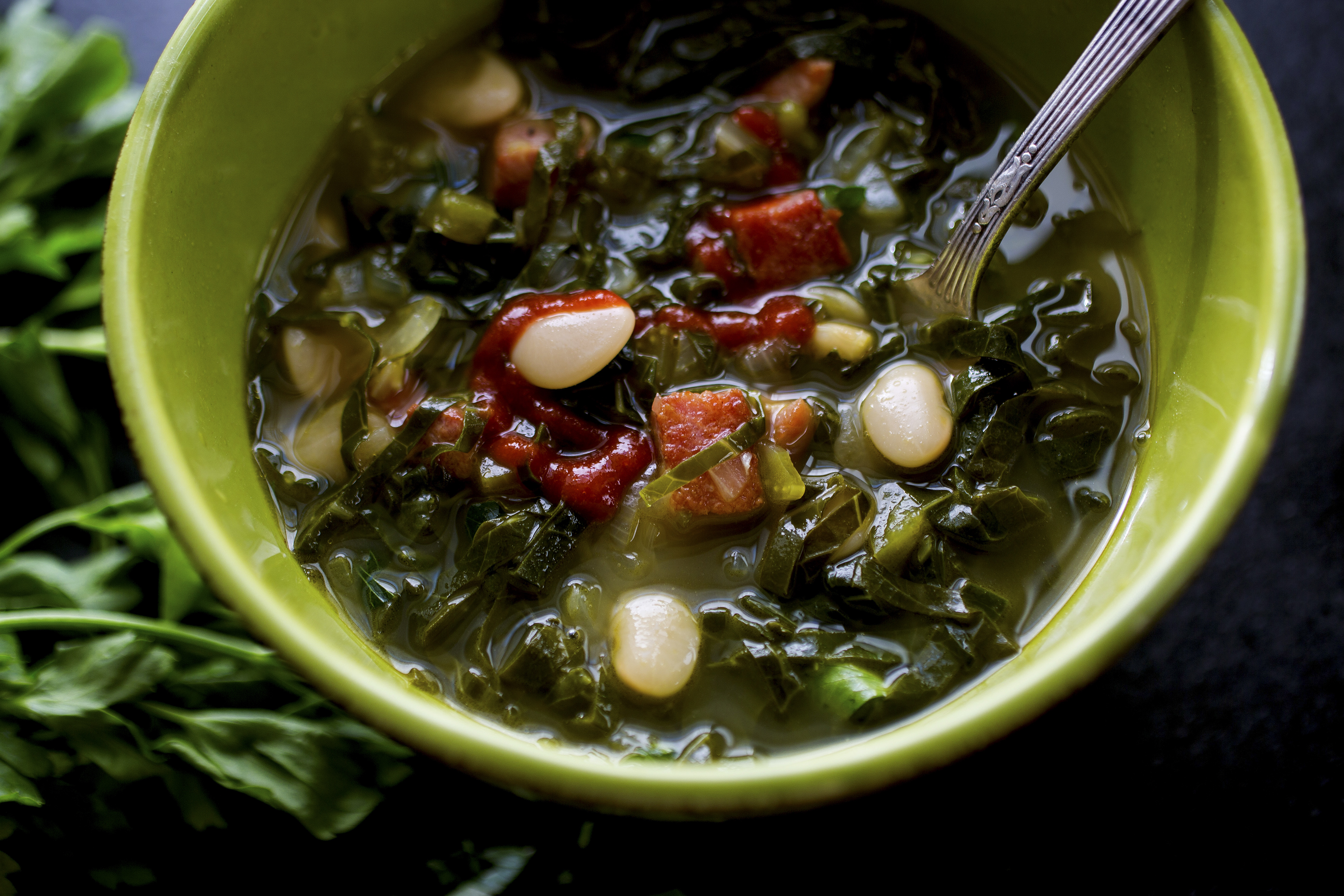Beans have been a staple at Zarzour's Cafe since it opened in 1918 and they have a hard, set rule: Dry beans only, nothing from a can.
Head cook Mary Smith makes pinto, lima and butter beans each week and makes at least four pounds of pintos every day, says Zarzour's owner Shannon Fuller.
"She soaks them the night before to speed up the cooking process," Fuller says. "She comes in the next morning and adds her special sauce and cooks them for about two hours. You have to watch them and keep adding water."
Canned beans, she says, take on the flavor of the can and just don't taste as good.
"Our beans are 'uncanny,'" she says.
The restaurant also stopped using such animal products as lard or fatback to make the beans about 13 years ago, "and hardly anybody noticed; Mary's recipe is so good."
"Our beans have no chemicals or preservatives and they taste better," she says. "Plus, we make our cornbread fresh every day to go with it. Some people come in just for beans and cornbread."
What Fuller says is true: Canned beans are never going to be as good as home-cooked dried beans, no matter how many seasonings you add to your pot.
Once you get over the notion that dried beans are fussy or in any way intimidating, whipping up a pot of them is one of the easiest ways to get dinner on the table. It may not be the fastest, but you can't get any simpler.
Here's the deal: Rinse your beans, put them in a pot covered with water and a spoonful of salt - yes, salt; more on this later - and let them simmer until they are tender but not mushy. This can take as little as 15 minutes for red lentils or as long as four hours for large, recalcitrant lima beans. Keep simmering. They will come around.
Salt at the beginning rather than at the end or in the middle of cooking, ignoring the conventional wisdom that beans cooked in salted water will never soften. It's just not true.
Salting early has many benefits. It seasons the beans to their velvety cores. It also intensifies the flavor of the cooking water, which will transform into a rich and flavorful broth that you can serve with your beans or save to use separately as a base for soups and stews. If you add salt later in the cooking process, you'll need to add a lot more of it, and even then you could end up with oversalted broth and blandish beans.
That's one bean myth shot down. Here's another: You don't really need to soak your beans.
Soaking does have benefits. It helps beans cook faster and more evenly, and it can help leach out the intestinal-distress-causing sugars some people are particularly sensitive to. But it's not do or die.
More spontaneous cooks can skip this step and just cook the beans a little longer; an extra hour or two should do it, depending upon the variety of bean. One thing to note: Adding salt to the soaking water helps speed up cooking by breaking down the beans' skins.
Whether or not you've soaked your beans, be sure to use lots of water for cooking them, covering them by at least 2 inches. And keep the water at a simmer (tiny bubbles) rather than a vigorous boil (rapidly bursting large bubbles). Gentle cooking stops them from moving around too much in the pot, which can burst their skins and make them mushy and waterlogged on the surface but still crunchy within.
Keep an eye on your beans so they don't overcook and burst. Beans are done when they are tender all the way through but still firm and intact. If you blow on a spoonful of beans fished out of the pot, the skins will wrinkle and curl back. But tasting a bean is the best way to see if it's ready.
Ham and Bean Soup With Collard Greens
4 tablespoons extra-virgin olive oil or bacon fat
1/2 pound diced cooked ham (about 2 cups)
2 large white onions, finely chopped
2 celery stalks, finely chopped
2 jalapeño peppers, finely chopped
1 green bell pepper, finely chopped
1 bay leaf
2 teaspoons kosher salt, more to taste
1/2 teaspoon black pepper
4 garlic cloves, minced
6 cups ham stock or chicken stock
4 1/2 cups cooked pinto, red kidney or pink beans
1 large bunch collard greens, leaves only, thinly sliced (8 cups)
1/4 cup flat-leaf parsley, chopped
1 teaspoon apple cider vinegar
Hot sauce (optional)
Sour cream or whole milk Greek yogurt (optional)
In a large pot over medium heat, heat 2 tablespoons oil or bacon fat. Add ham and cook until beginning to brown, 8 to 10 minutes. Use a slotted spoon to transfer ham to a bowl.
Raise heat to medium-high and add remaining 2 tablespoons oil or fat to the pan. Add onion, celery, jalapeño peppers, bell pepper, bay leaf, 1 teaspoon salt and the black pepper; cook until lightly browned, 8 to 10 minutes, stirring frequently. (Add a little water, if necessary, to prevent burning on the bottom of the pot.) Stir in garlic and cook another 2 minutes.
Add stock, beans, collard greens, reserved ham and remaining 1 teaspoon salt. Bring to a boil, then reduce heat, party cover, and simmer for 30 minutes, stirring occasionally. Add parsley, vinegar and more salt to taste. Serve topped with hot sauce and sour cream if you like.
Yield: 6 to 8 servings. Total time: 1 hour.
Chicken Red Bean Creole
1 1/2 pounds boneless chicken breast, cut into 1-inch strips
1 can (14.5 ounces) no-salt-added diced tomatoes, do not drain
1 cup chili sauce
1 1/2 cups green bell pepper, chopped (1 large pepper)
1/2 cup celery, chopped (1 1/4 stalks)
1/4 cup white onion, chopped
2 cloves garlic, minced (or 1/4 teaspoon garlic powder)
1 tablespoon fresh basil, chopped (or 1 teaspoon dried basil)
1 tablespoon fresh parsley, chopped (or 1 teaspoon dried parsley flakes)
1/4 teaspoon crushed red pepper
1 cup no-salt-added chicken stock
2 cups cooked red kidney beans, cooked without salt
Spray a stockpot with nonstick cooking spray.
Heat stockpot over high heat.
Cook chicken strips in hot stockpot, stirring, for 3-5 minutes or until strips are no longer pink.
Reduce heat. Add tomatoes with juice, chili sauce, green pepper, celery, onion, garlic, basil, parsley, red pepper and chicken stock.
Increase heat and bring to a boil.
Add small red beans. Reduce heat and simmer, covered, for 10 minutes.
Makes 6 main dish servings (1 1/2 cups per serving). Serving suggestion: Over rice or pasta.
Pinto Bean Applesauce Raisin Cookies
1 cup brown sugar
1/2 cup butter or shortening
2 eggs
3/4 cup pinto beans, cooked and pureed
3/4 cup chunky applesauce
2 1/4 cup all-purpose flour
1 teaspoon baking soda
1 teaspoon baking powder
1/2 teaspoon cinnamon
1/2 cup nuts
1/2 cup golden raisins
Heat oven to 375 degrees.
In a food processor or blender, put sugar and shortening and cream, add eggs and blend well. Add pureed pinto beans and applesauce, beat until fluffy.
Combine dry ingredients in a small bowl; add to creamed mixture and mix until smooth. Stir in nuts and raisins. Drop by tablespoons onto greased cookie sheet.
Bake for 15-17 minutes or until golden brown. Cool on rack. Makes 2-3 dozen cookies.
The New York Times News Service contributed to this story.


